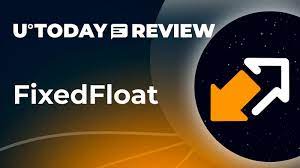In the world of finance and economics, the terms “fixed” and “fixedfloat” often emerge when discussing exchange rates, interest rates, and even loans. Both systems, while distinct, are used to manage financial volatility and provide stability or adaptability depending on the nature of the transaction. One term that has gained traction is “fixed float,” a hybrid model that combines the strengths of both fixed and floating systems. This article delves into the concept of fixed float, its applications, and its benefits in various financial scenarios.
What is a Fixed Float?
A fixed float refers to a system or arrangement that combines aspects of both fixed and floating mechanisms. It is typically used to describe:
- Exchange Rates: A fixed float system can be used in currency markets where a currency is pegged to another currency (fixed) but is allowed to fluctuate within a specified band (float). This system aims to provide the benefits of stability and adaptability, depending on the economic conditions.
- Interest Rates: In lending and borrowing scenarios, a fixed float interest rate may start with a fixed rate for an initial period and later transition into a floating rate for the remainder of the term. This gives borrowers initial stability and predictability, while allowing for potential lower rates once the floating period kicks in.
The Fixed Float Exchange Rate System
In the context of exchange rates, many countries adopt a fixed float mechanism when they want to maintain some level of stability without fully sacrificing the advantages of market-driven adjustments.
A common example of a fixed float exchange rate is the Crawl-like Peg system. Under this system, a country’s central bank sets a fixed exchange rate for its currency relative to another major currency (like the US dollar or the Euro), but allows it to fluctuate within a predetermined range. The currency is not entirely subject to the free market; instead, the central bank intervenes periodically to ensure the value stays within a defined band.
This arrangement provides several benefits:
- Stability: It shields the economy from extreme fluctuations, ensuring that the value of the national currency remains relatively stable over time. This is particularly important for countries with smaller economies or those dependent on imports and exports.
- Flexibility: While the fixed aspect provides stability, the floating band allows the currency to adjust for inflation, changes in global demand, or economic shifts, providing flexibility in response to market conditions.
The Hong Kong Dollar (HKD) is an example of a currency that operates under a fixed float exchange rate system, where the HKD is pegged to the US dollar within a narrow band, allowing for limited fluctuations.
Fixed Float Interest Rates
In the world of lending, fixed float interest rates offer a hybrid solution that attempts to balance stability with potential cost savings. This type of interest rate is often used in mortgages, loans, and bonds.
- Initial Fixed Rate Period: For a specified period, the interest rate remains fixed, providing borrowers with predictable monthly payments. This can be particularly advantageous in the early years of a loan, especially if the borrower is concerned about potential market volatility.
- Transition to Floating Rate: After the fixed rate period ends, the interest rate shifts to a floating or variable rate, often tied to a benchmark such as the LIBOR (London Interbank Offered Rate) or SOFR (Secured Overnight Financing Rate). This transition allows borrowers to benefit from lower interest rates if the market conditions improve, such as a drop in interest rates across the economy.
- Risk Considerations: The trade-off for borrowers is the uncertainty after the fixed period. If interest rates rise, their payments could increase. However, if rates remain stable or decrease, they might pay lower interest rates in the future.
This structure is beneficial for those who want to lock in an affordable rate in the early years of the loan but are willing to take the risk of fluctuating rates later in the term.
The Pros and Cons of Fixed Float
As with any financial model, fixed float systems come with their own advantages and challenges. Here’s a look at both sides:
Advantages:
- Risk Mitigation: Fixed float systems can help mitigate the risk of extreme volatility by combining the stability of fixed mechanisms with the adaptability of floating elements.
- Economic Adaptability: In the case of exchange rates, a fixed float system allows for some flexibility to react to market conditions, without sacrificing control over the value of the currency.
- Predictability: Borrowers can enjoy predictable payments during the fixed-rate period, which can help with financial planning and budgeting.
- Potential Savings: The transition to a floating rate offers the possibility of lower interest costs, especially when market rates decrease.
Disadvantages:
- Limited Control: For governments or financial institutions managing a fixed float system, there may be limited control over market forces. While exchange rates are somewhat fixed, they can still fluctuate within a band, and external factors (such as international crises or market shifts) can still lead to instability.
- Uncertainty After the Fixed Period: In the case of loans or mortgages, borrowers may face higher interest rates after the fixed period ends, especially if economic conditions change unfavorably.
- Market Dependence: A fixed float system still depends on broader market conditions. For example, the effectiveness of a floating interest rate is contingent on the stability of global financial systems, which may not always provide favorable outcomes.
Real-World Applications of Fixed Float
- Emerging Market Economies: Fixed float systems are particularly popular in emerging market economies, where governments may wish to avoid the volatility of fully floating currencies but still want some flexibility. By allowing their currency to fluctuate within a range, these countries can maintain stability without imposing heavy restrictions on trade.
- Mortgages and Loans: Fixed float interest rates are common in real estate lending, especially for individuals who expect to stay in their homes for only a few years. The initial fixed-rate period provides stability, while the transition to a floating rate can potentially lead to savings if rates decrease.
- Corporate Finance: Large corporations with exposure to international markets may use fixed float exchange rates to manage the risks of currency fluctuations while still benefiting from the flexibility of a range-based system.
Conclusion
The fixed float system is a sophisticated financial tool that allows for a balance between stability and flexibility. Whether applied to currency exchange or interest rates, this hybrid model provides an adaptable solution for managing economic risk and uncertainty. While it may not eliminate all potential financial volatility, it offers a middle ground that can be beneficial for both governments and individuals, making it a useful strategy in diverse economic contexts. As financial markets continue to evolve, the hybrid approach of fixed float is likely to remain a key component of risk management and economic policy.




